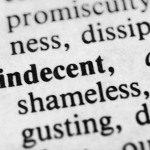Sexual Assault in Prison

A survey of NSW and Queensland prisons suggests sexual assault is not as prevalent in prison as some may think.
Going to Prison- The Fear
The UNSW survey found that one-third of people who are going to prison believe they will be sexually assaulted.
That fear is reinforced by popular culture, which portrays prison rape as common, even making light of such abuse.
Some have even sought to use the apprehension of sexual assault as a deterrent, including former Minister for Corrections Michael Yabsley who commented:
“Rape in prison is inevitable and provides a useful deterrent factor to those thinking of offending.”
The Survey
Contrary to popular views, the 2011 UNSW survey found that 7% of male inmates had engaged in sexual intercourse with another inmate. That number was much higher for female inmates – one-third. Significantly, the survey found the experiences were overwhelmingly consensual.
“Sexual coercion seems to be a disappearing phenomenon in prisons,” said the co-author of the study, Professor Basil Donovan.
“Only 2.5% of male prisoners and 3.9% of female prisoners reported that they had been forced or frightened into unwanted sexual activity. For almost half of those who reported coercion, this had only occurred once and for some the event dated back decades.”
Of the 7% of men who had sexual encounters behind bar, 79% said they did it for pleasure, 15% to garner protection, 4% for items other than drugs and 2% for drugs.
The survey is supported by a 2015 study, which found that 7% of imprisoned men had been threatened with sexual coercion while, while 2.3% reported being sexually coerced.
Professor Donovan says there is an argument that those in prison are more likely to be sexually assaulted outside prison walls – with 60% of women and 13% of men reporting sexual coercion before entering prison.
Reasons for the Improvement
The Professor believes rates of sexual assault have declined in the past two-decades for the following reasons:
- A much improved prison culture,
- More sympathetic management applying the principle of duty-of care, and
- The presence of video surveillance.
Continuing Concerns
However, he says there are groups within prison who remain at high-risk of sexual assault – including non-heterosexual men, who are eight times more likely than heterosexual men to be sexually assaulted, and first time inmates who are twice as likely to be the subject of sexual coercion.
Criticism of Surveys
Critics argue the results are skewed by the culture of under-reporting prison assaults, and believe the figures may be a lot higher than reported.
In any event, it is evident that sexual assault continues to be a problem within Australian prisons, and the fact inmates are carefully monitored in an enclosed environment should be enough to ensure it does not occur at all.






